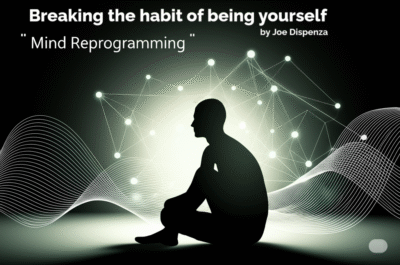Summary:
This article explores Mind Adaptability—the brain’s capacity to adjust to new challenges in study, work, and daily life—and offers concrete, actionable techniques to enhance it. First, we define Mind Adaptability and explain its importance. Then, we delve into proven methods (from neuroplasticity exercises to Acceptance and Commitment Therapy), detailing when and how to apply each. We illustrate these techniques with real-world stories of figures like Ryan Reitmeyer and Satya Nadella, breaking down their moment-to-moment practices. Finally, we present a concise table summarizing each technique’s purpose, application timing, and key benefits.
Table of contents
- 1. What Is Mind Adaptability and Why Does It Matter?
- 2. Which Techniques Train Your Mind Adaptability?
- 3. Which Luminaries Have Applied These Techniques?
- 4. What Are Common Myths About Mind Adaptability?
- 5. How to Implement a Personalized Mind Adaptability Plan?
- 6. Key Technique Comparison
- 7. Conclusion & Action Questions
1. What Is Mind Adaptability and Why Does It Matter?
1.1 What Is Mind Adaptability?
Mind Adaptability refers to the brain’s ability to reorganize itself in response to new environments, challenges, and information. It encompasses both cognitive flexibility—shifting thinking strategies—and psychological flexibility, the capacity to stay present and act in line with values despite change.
1.2 Why Should You Develop Mind Adaptability?
- Enhanced Problem-Solving: Adaptive thinkers switch approaches when stuck.
- Resilience Under Stress: Flexibility lowers anxiety by reframing challenges as opportunities.
- Career Agility: In rapidly evolving fields, adaptable minds learn new skills faster.
- Lifelong Growth: Maintaining neuroplasticity supports mental health and learning into older age.
2. Which Techniques Train Your Mind Adaptability?
2.1 How Does Novelty Training Enhance Mind Adaptability?
Technique: Engage in New Activities—learn languages, instruments, or unfamiliar sports.
- When to Use: Weekly, especially when routine induces complacency.
- How It Works: Novel tasks force new neural connections (neuroplasticity) and challenge your schema.
- Moment-by-Moment Example: At 7 PM, Sarah, a software engineer, spends 20 minutes on Duolingo. Each new lesson presses her brain to form fresh connections, boosting cognitive flexibility for her next coding challenge.
2.2 When Should You Practice Mindfulness for Flexibility?
Technique: Mindfulness & Focused Meditation.
- When to Use: Daily, especially before stressful meetings or study sessions.
- How It Works: By observing thoughts nonjudgmentally, you break rigid response patterns and easily redirect attention.
- Real-Life Story: Neuroscientist Dr. Adam Gazzaley integrated 10-minute breathing exercises before designing his video game NeuroRacer. This practice sharpened his attention shifts, laying groundwork for a tool that improves multitasking in older adults.
2.3 Why Embrace Diverse Perspectives?
Technique: Perspective-Taking Conversations.
- When to Use: During team projects or debates.
- How It Works: Considering others’ viewpoints expands mental models, reducing bias and enhancing adaptability.
- Application Example: In a weekly book club, Ahmed alternates roles: one week defending his stance, the next advocating the opposite. This flip cultivates agility in thought and empathy.
2.4 How Does Acceptance and Commitment Therapy (ACT) Build Adaptability?
Technique: Acceptance and Commitment Therapy.
- When to Use: When facing emotional resistance to change.
- How It Works: ACT’s six core processes (e.g., cognitive defusion, present-moment attention) foster psychological flexibility, helping you commit to value-driven actions despite discomfort.
- Case Study: Leila, transitioning careers at 35, used ACT to accept fear of failure. By practicing cognitive defusion—observing thoughts as passing events—she stayed focused on skill-building steps, easing her shift to UX design.
2.5 What Role Do Physical Exercises Play?
Technique: Aerobic Exercise & Complex Physical Activities.
- When to Use: 3–5 times/week, ideally before mentally demanding tasks.
- How It Works: Physical activity enhances brain-derived neurotrophic factor (BDNF), which supports synaptic growth and plasticity.
- Moment-by-Moment Example: Carlos begins each workday with a 15-minute jog. Mid-meeting, he notices increased alertness, easily shifting between agenda items.
2.6 How Can Self-Directed Neuroplasticity Accelerate Growth?
Technique: Intentional Mental Rehearsal & Visualization.
- When to Use: Before presentations or exams.
- How It Works: Mentally rehearsing challenges creates neural patterns similar to actual practice, speeding real-world performance gains.
3. Which Luminaries Have Applied These Techniques?
3.1 Ryan Reitmeyer: From Brain Injury to Cognitive Triumph
After a boat accident left him severely impaired, Ryan underwent BrainHQ training—daily sessions of targeted exercises developed by Michael Merzenich. Each drill challenged speed, memory, and multitasking. Over months, Ryan regained speech and executive function, illustrating neuroplasticity’s power.
3.2 Satya Nadella: Cultivating a Growth Mindset at Microsoft
When Satya became CEO in 2014, he introduced “learn-it-all” culture over “know-it-all,” encouraging employees to embrace failure and new skills. He personally led workshops in mindfulness and cross-functional team rotations, fostering organizational Mind Adaptability and spurring Microsoft’s resurgence.
4. What Are Common Myths About Mind Adaptability?
- “You Can’t Teach an Old Brain New Tricks.”
• Reality: Adult brains remain plastic; enriched environments and challenges boost adaptability. - “Meditation Is Only for Spirituality.”
• Reality: Mindfulness enhances cognitive flexibility through attention training. - “Only Formal Education Improves Flexibility.”
• Reality: Informal activities—hobbies, debates—equally foster adaptability.
5. How to Implement a Personalized Mind Adaptability Plan?
- Assess Your Routine: Identify rigid patterns (e.g., same study method every day).
- Select Two Techniques: Combine a physical activity (e.g., jogging) with a mental challenge (e.g., language learning).
- Schedule Micro-Sessions: Allocate 10–20 minutes daily for each practice.
- Track Progress: Use journals or apps (e.g., BrainHQ) to monitor improvements.
- Iterate: Every two weeks, introduce a new technique or increase difficulty.
6. Key Technique Comparison
| Technique | When to Use | Primary Benefit |
|---|---|---|
| Novelty Training | Weekly | Builds new neural pathways |
| Mindfulness & Meditation | Daily | Enhances attentional control |
| Perspective-Taking | During group work or debates | Reduces bias; fosters empathy |
| ACT | Facing emotional barriers | Increases psychological flexibility |
| Aerobic Exercise | 3–5× per week before tasks | Boosts BDNF; improves mental agility |
| Mental Rehearsal & Visualization | Before high-stakes events | Accelerates skill acquisition |
7. Conclusion & Action Questions
By intentionally applying Mind Adaptability techniques—from neuroplastic drills to ACT—you can navigate new study and work scenarios with agility and confidence. Which practice will you try first? How will you measure your growth? Embrace change today, and watch your mind transform challenges into opportunities.
References
Below are the direct URLs to the sources used in the article:
- Harvard Business Review – “How to Build Resilience”:
https://hbr.org/2016/04/how-to-build-resilience - American Psychological Association – “Building Your Resilience”:
https://www.apa.org/topics/resilience - MindTools – “Cognitive Restructuring”:
https://www.mindtools.com/ao3jz5a/cognitive-restructuring - Verywell Mind – “What Is Cognitive Reframing?”:
https://www.verywellmind.com/what-is-cognitive-reframing-2795062 - Psychology Today – “The Power of Visualization”:
https://www.psychologytoday.com/us/blog/the-power-prime/201203/the-power-visualization - Forbes – “How to Use Visualization to Achieve Your Goals”:
https://www.forbes.com/sites/forbescoachescouncil/2018/06/25/how-to-use-visualization-to-achieve-your-goals/ - ScienceDirect – “The Role of Mental Contrasting in Self-Regulation”:
https://www.sciencedirect.com/science/article/abs/pii/S0092656613000837 - National Institutes of Health (NIH) – “The Effects of Mental Contrasting on Goal Commitment”:
https://www.ncbi.nlm.nih.gov/pmc/articles/PMC3814480/ - University of Pennsylvania – “Grit: Perseverance and Passion for Long-Term Goals”:
https://angeladuckworth.com/grit-scale/ - TED Talks – Angela Duckworth: “Grit: The Power of Passion and Perseverance”:
https://www.ted.com/talks/angela_lee_duckworth_grit_the_power_of_passion_and_perseverance





















